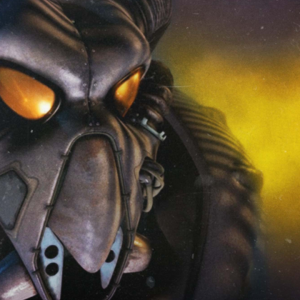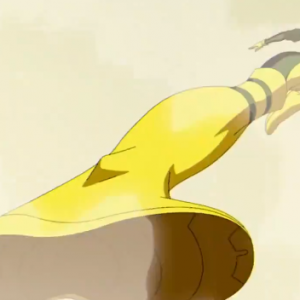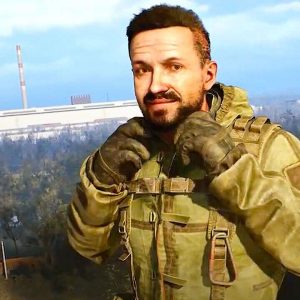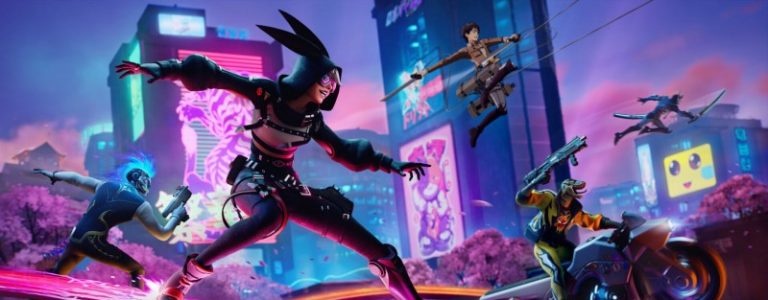On the surface, Stray Souls seems like it has everything a horror fan would want. In fact, its hellish creatures, townsfolk cult, and mysteriously empty main street with a malfunctioning fog machine are everything Silent Hill fans, in particular, could ask for, unabashedly drawing from Konami’s iconic horror series throughout. But despite an effectively unsettling opening, pretty much everything else – from its dull combat and cringeworthy conversations to the uninspired boss fights and long, long list of bugs and glitches – fails to deliver. The most impressive thing about Stray Souls ends up being just how badly it manages to fall short of that inspiration by almost every single measure.
Stray Souls takes you to Aspen Falls, an unremarkable American town that – brace yourself for this shocker – hides a terrible secret. Your journey focuses on the newly relocated Daniel, who moved to the community after inheriting a quaint, if rundown, home from a grandmother he didn’t even know he had. As he gets to know his neighbors and the legacy left by his delightful, definitely-not-involved-in-anything-dodgy long-lost grandma, you’ll get to know Aspen Falls’ sinister (if painfully predictable) past through boring combat, overly-long exposition dumps, and townsfolk that should really stop writing everything down and leaving evidence of their darkest secrets lying around for anyone to find.
And yet, this town can be stuffed with wonderful detail at times, and Stray Souls manages to open with a bang – quite literally. Without spoiling anything, the opening sequence is stunning in all the right ways, a deliciously grim (and very bloody) way to set the stage for what may follow. But for every one of Stray Souls’ positives, there are 20 negatives, and it doesn’t take long before its clear promise starts to disintegrate.
I actually cared about Daniel… at first, anyway. But it’s hard to accept him for the ordinary guy he purports to be when he doesn’t seem to react to the horrors around him in a convincing or plausible way, and harder still to understand him or his choices as a result. For instance: when his companion and new neighbor, Martha, reveals she’s brought a gun to protect them, he freaks out and insists he’s never even held one before. But when he pulls it out thirty seconds later to take on a spooky shadow in the distance, he’s strutting about the place like Leon Kennedy and combat-rolling out of harm’s way like he’s just come back from two tours in an active warzone. Later he screams cringeworthy one-liners like “I’VE GOT A BULLET WITH YOUR NAME ON IT RIGHT HERE!” as sinewy creatures break out of the forest overgrowth to attack him, then just moves on with his day instead of immediately calling poor Martha – who’s on her own elsewhere in the forest without a gun – to let her know what the hell just happened.
I’m afraid Martha, too, is bland and unconvincing, and their relationship – which dissolves into awkward jokes and over-familiar banter just minutes after they first meet – feels similarly inauthentic. You’ll quickly learn that their closeness goes beyond mere geography, but even that isn’t enough to explain why these characters behave the way they do. And as much as I appreciate learning about their discoveries through their conversations instead of having to rely on terminally long lore dumps in strategically placed notes and journals alone, Martha ultimately comes across as shallow, predictable, and… well, a bit useless overall, really. She’ll even appear and disappear at will, apparently able to throw her voice so that even when she’s nowhere to be seen, she’s able to continue a conversation as if she’s right beside you.
Despite wearing its love for Silent Hill so proudly on its sleeve, it feels as though Stray Souls misses much of what makes those games so memorable. It can look and sound the part at times, thanks in no small part to the dreamy, dreary score of Silent Hill composer Akira Yamaoka – there’s no denying the dread you feel when the music ramps up to signal a fight is afoot. But the combat itself is floaty and uneven, not least because our Danny sways all over the place when looking down sights, making it unnecessarily difficult to land a shot at the monsters barrelling towards you. And while those monsters do look cool, their designs seem disparate and disconnected from anything going on around them, ignoring that Silent Hill’s enemies often tie back to the overarching themes of the series in thoughtful ways (even if only loosely).
Combat is further hampered by the lack of an inventory system, which means there’s no way to re-read the notes and clues you’ve picked up nor space to carry extra health items around with you. Generally, that won’t matter because the fights are pitifully slow, but a couple of close-quarter boss encounters became particularly frustrating when there were no health pick-ups to be found, forcing me and Daniel to take a midnight stroll through (another) spooky forest with minimal health and no chance to heal. And yet, outside of those few moments where there’s suddenly not enough healing, most of the time you’ll be running past dozens and dozens of identical copy-and-pasted ammo crates and health boxes you’ll never actually use.
Speaking of which: in a tight spot? Feeling a little overwhelmed? Just keep running. Enemy AI is laughably poor, they often can’t seem to cross a doorway to get you, and if you pull your foes far enough away from their initial spawn point, they will, quite literally, spontaneously combust.
There are also a handful of dialog choices, but it’s not clear what, if any, impact they have on the story being told. For instance, after crashing with Martha for the night – perhaps the only sensible thing Daniel does in the entire game – they inexplicably decide to drive to a cemetery to help him “uncover more information about his mysterious past,” enjoying a long conversation about the true fate of his family while en route. Daniel can reply to these revelations in one of two equally meaningless ways: “Are you serious? Who told you this?” or “Yeah, ok, Martie.” But Martha’s response could have followed either one of those, which makes me wonder why you’re given such pointless choices like this at all.
Only your final choice seems to have any meaningful impact, affecting which of three equally unsatisfying endings you get. The story doesn’t quite make sense no matter what you do and ends pretty abruptly without a meaningful resolution. By the time you finish up the 8-12 hour adventure, you still won’t really understand the motivation of the townsfolk, its cult, or your delightful grandmother any more than you’ll understand why the fog, at times, becomes a sentient barrier as solid as rock.
There are just so many ways Stray Souls consistently falls short. Puzzles are actually admirably hands-off, leaving you to get on with it with as little guidance as possible, but that means they’ll occasionally fall on the wrong side of frustrating. Boss fights are agonizingly dull, where you’re forced to take on bloated bullet sponges one after the other, combat-rolling constantly to avoid damage. And who on Earth would think using R3 to roll was a good idea? Or more importantly, why can’t I remap that roll to one of the many other unused buttons on my controller instead? These may seem like small things in isolation, but string them together, and Stray Souls crumbles into a pile of random jumpscares and spooky creatures that frustrate far more than frighten.
That’s all before we even get to performance, and it’s been some time since I’ve played a game as poorly optimized as this, at least on PS5. Stray Souls is horrendously buggy. Sometimes it’s little issues – say, when you’re told to “defeat all monsters to escape the fog” and you realize the last remaining enemy spawned inside a building you cannot access. Other times it’s huge things, like being completely unable to aim at or target the first boss. Even small quality-of-life stuff is flawed or missing entirely, like Daniel holstering his gun every single time there’s a cutscene, or there being no health bars for bosses, or no way to enlarge the laughably tiny subtitles. It’s almost impossible to play for more than a couple of minutes at a time without being reminded of just how rough Stray Souls feels.
It’s such a shame to see some real potential here through all the muck, too, perhaps best exemplified by a note I found abandoned in an alleyway. All too easy to overlook, but I – ever the completionist – jogged over to it nonetheless. At first, I dismissed it as another terminally boring lore dump with embarrassingly poor grammar, but I soon realized that the random capitalizations were actually not random at all, and that the note contained a delightfully creepy secret message. It was a brief flash of what Stray Souls could have been if that care had been shown to the whole campaign. Instead, all we have is a crushingly disappointing horror game that’s not fun, not scary, and not really worth your time.
But hey. At least Daniel doesn’t have a stamina bar.
























